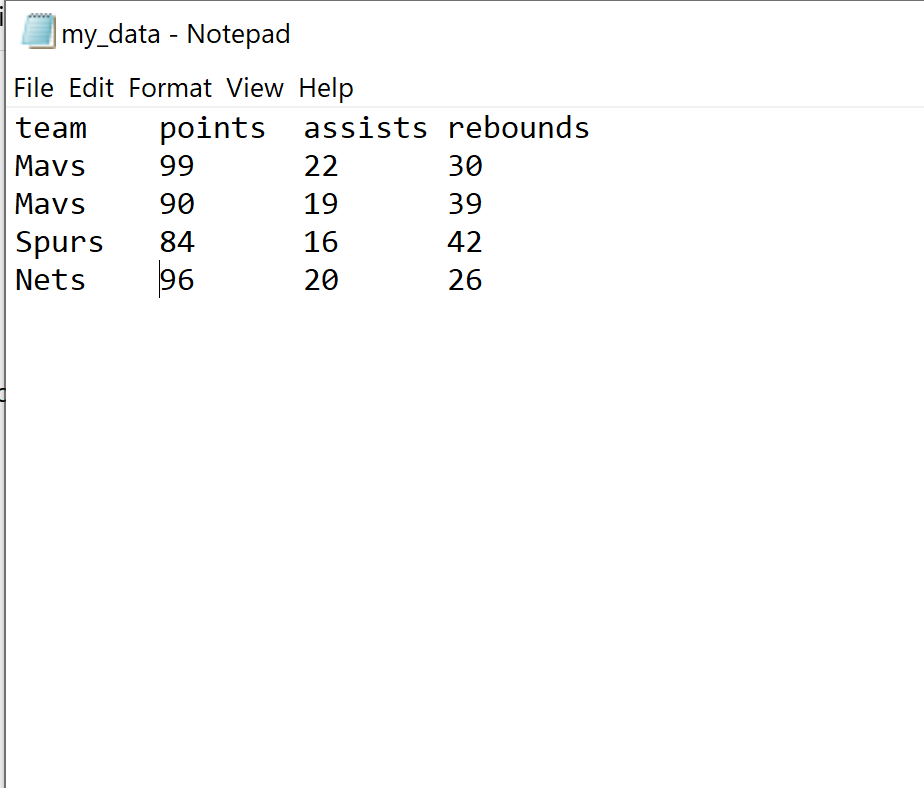如何在 r 中使用 read.delim 函数
您可以使用read.delim()函数读取 R 中的分隔文本文件。
该函数使用以下基本语法:
read.delim(文件, header=TRUE, sep=’\t’)
金子:
- 文件:文件的位置。
- header :指示第一行是否代表表头。默认值为 TRUE。
- sep :表分隔符。默认为制表符 (\t)。
下面的例子展示了如何在实际中使用这个功能。
示例:如何在 R 中使用 read.delim
让我们首先在 R 中创建一个数据框:
#create data frame df <- data. frame (team=c('Mavs', 'Mavs', 'Spurs', 'Nets'), dots=c(99, 90, 84, 96), assists=c(22, 19, 16, 20), rebounds=c(30, 39, 42, 26)) #view data frame df team points assists rebounds 1 Mavs 99 22 30 2 Mavs 90 19 39 3 Spurs 84 16 42 4 Nets 96 20 26
然后让我们使用write.table()函数将数据框导出到制表符分隔的文本文件:
#export to tab-delimited text file write.write. table (df, ' my_data.txt ', quote= FALSE , sep=' \t ', row.names = FALSE )
然后我可以导航到导出数据的位置并查看文本文件:

然后我可以使用read.delim()函数从文本文件中读取:
#read in tab-delimited text file my_df <- read. delim (' my_data.txt ') #view data my_df team points assists rebounds 1 Mavs 99 22 30 2 Mavs 90 19 39 3 Spurs 84 16 42 4 Nets 96 20 26
该数据框对应于我们之前创建的数据框。
请注意, read.delim()函数的默认表分隔符是制表符 (\t)。
所以下面的代码会产生相同的结果:
#read in tab-delimited text file my_df <- read. delim (' my_data.txt ', sep=' \t ') #view data my_df team points assists rebounds 1 Mavs 99 22 30 2 Mavs 90 19 39 3 Spurs 84 16 42 4 Nets 96 20 26
使用 read.delim() 的注意事项
请注意,您可以使用getwd()函数获取当前工作目录,以查找导出第一个数据块的位置。
如果您想更改当前工作目录的位置,也可以使用setwd()函数。
其他资源
以下教程解释了如何将其他文件类型导入到 R 中: